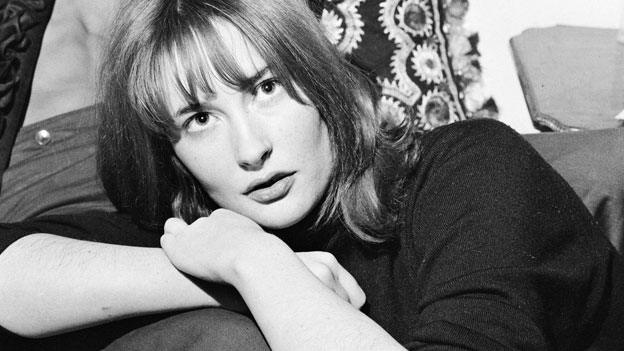Chas Chandler: The man who discovered Jimi Hendrix
- Published
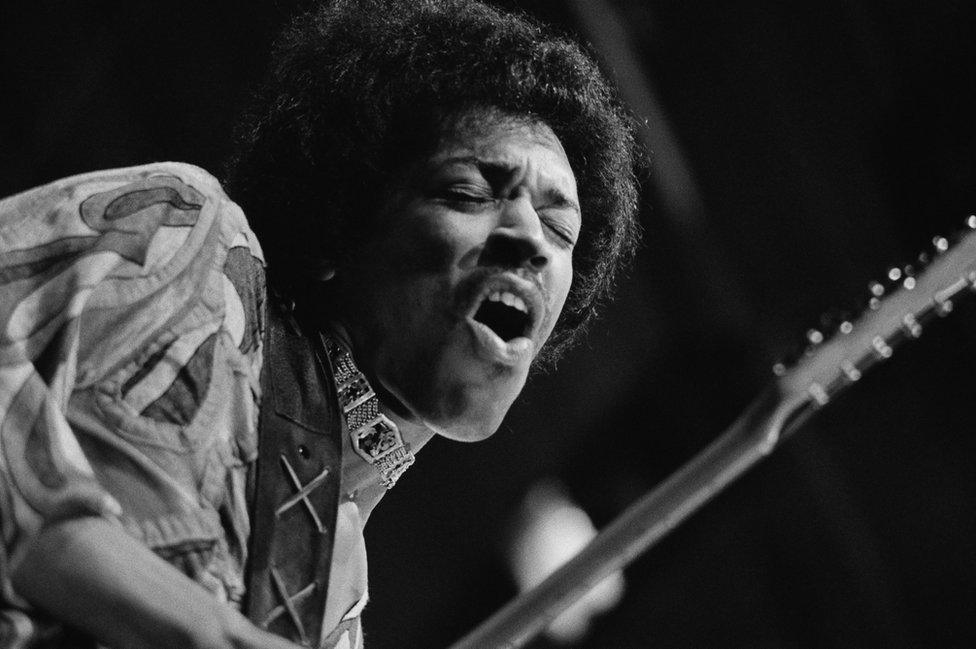
His discovery of a young Jimi Hendrix in a New York club would change the face of music forever. Twenty years on from Chas Chandler's death, those who knew him look back at his life.
Summer 1966. A small Greenwich Village venue. There, a little-known guitarist performing under the stage-name Jimmy James would set in motion a four-year chain of events destined to go down among the most famous in rock 'n' roll folklore.
Sitting among the Cafe Wha? audience, on the recommendation of Stones guitarist Keith Richards' girlfriend, was Bryan "Chas" Chandler - bassist with chart-topping UK band The Animals and now on the lookout for new talent to guide through the murky world of the music business.
"This guy didn't seem anything special, then all of a sudden he started playing with his teeth," recalls roadie James "Tappy" Wright, who was alongside his long-time pal and fellow Geordie.
"People were saying, 'What the hell?' and Chas thought, 'I could do something with this kid'."
Promising an introduction to his hero Eric Clapton, he soon convinced the 23-year-old to accept him as his manager.
Chandler brought Hendrix to London in late September and, with financial backing from Michael Jeffery who had overseen The Animals' short-lived career, set about promoting his young charge.
Teaming him up with bass player Noel Redding and drummer Mitch Mitchell, a string of hits - Hey Joe, Purple Haze and The Wind Cries Mary - would create a rock 'n' roll revolution - but not without an initial struggle.
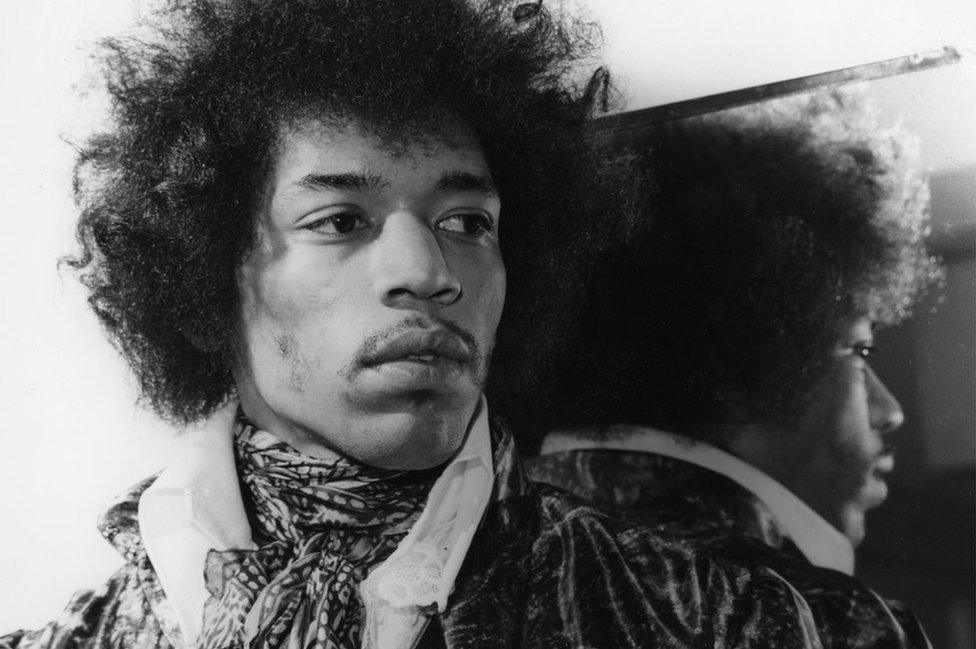
Hendrix, here backstage at Top of the Pops in May 1967, wowed with his flamboyant style
"Jimi couldn't get a deal for love nor money," states Wright, who later became one of the American's tour chiefs. "It was only when The Who's manager Kit Lambert, who had Track Records, got involved that he was signed.
"Chas's job was to go in the studio and record Jimi. He was the main man on that early studio work.
"Chas was a tough cookie. You didn't mess about with him. He was great, but a bit of a bully when he wanted to be and a strict guy in the control room.
"I saw times when Jimi would come in with two or three birds and Chas threw them out. They'd say, 'Jimi invited us,' but Chas didn't care."
The incendiary albums Are You Experienced and Axis: Bold as Love reached the top five on both sides of the Atlantic, while a performance at the 1967 Monterey Pop Festival would go down in legend after Hendrix - eager to top a blistering set by English rockers The Who - set his guitar ablaze.
For a time Chandler and his Swedish partner Lotta lived with Hendrix and his girlfriend Kathy Etchingham in a flat owned by Beatles drummer Ringo Starr in London's Montagu Square.
Trouble lay around the corner, however, as the recording of 1968's Electric Ladyland began.
Part-way through the sessions, Chandler quit. Accounts why vary, although "hangers-on" and Hendrix's drug use reportedly caused tensions.

Chas Chandler, centre, topped the charts on both sides of the Atlantic with The Animals
Further performances at Woodstock in August 1969 and September 1970's Isle of Wight Festival cemented his reputation as one of the most daring and talented guitarists the world had ever seen.
Little more than two weeks after the latter, though, he was dead having choked on his own vomit.
"He'd got himself the most amazing rock star that's walked the earth," says Tyneside-based former music journalist Elaine Cusack, who wrote for The Times, Mojo and Select before researching Chandler's life for a proposed book.
"He had to walk away with a very heavy heart.
"What was so genius was taking Hendrix out of America, bringing him to the most swinging place - London - and then selling him back to the US."
That strategy seemingly mirrored the success Chandler had enjoyed with The Animals in 1964, recording an electrified rhythm 'n' blues version of States-side folk standard House of the Rising Sun.
After topping the UK hit parade, it scaled the summit of the Billboard Hot 100 and saw the group spearhead the "British Invasion" alongside The Beatles, Rolling Stones and Herman's Hermits.
Despite further hits, including We Gotta Get out of This Place, long-lasting chart domination would elude the first incarnation of the band as concerns over finances caused rifts and disbandment by mid-1966.
"We toured non-stop for three years, doing 300 gigs a year and we hardly got a penny," Chandler would later lament with the finger of blame pointed at Jeffery.
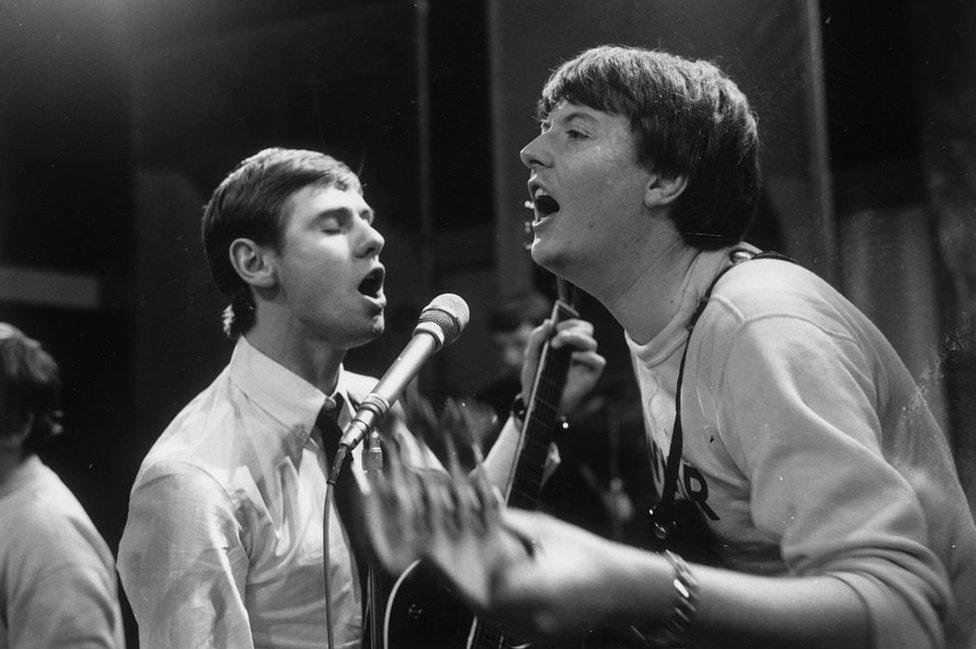
Chandler (right) and The Animals' original guitarist Hilton Valentine performed on a string of 60s hits
"The Animals had been massive in America on the back of the whole British thing, but they were mismanaged," says Cusack.
"House of the Rising Sun says 'arrangement by [keyboardist] Alan Price'. The rest of the band didn't get any credit. The majority of the royalties went - and still do - to Price."
Moving on from the collapse of his relationship with Hendrix, Newcastle-born Chandler would go on to mastermind the rise of Midlands glam-rockers Slade and steer them to chart glory through the 1970s.
After divorcing Lotta, a second marriage followed in 1978 - to beauty queen Madeleine Stringer.
Chandler, ever forthright, proposed just one week after they had first met.
"He said, 'Don't you laugh at me, I'm serious,'" she recalls.
With Miss UK competition rules stating she could not wed while holding the title, their pair tied the knot soon after her reign drew to a close later that year.
Living first in Surrey, the couple moved to London before relocating to Cullercoats, in their native North East, in 1984.
One final time, he would leave his mark on the music business with his involvement in the construction of what is now known as the Metro Radio Arena.

Chandler put together The Jimi Hendrix Experience, with Noel Redding, left, and Mitch Mitchell
David Bowie would be the first major act to perform at the venue, in December 1995, but it was Ray Charles who charmed Chandler the most.
"Chas really admired him and said it was like watching him in your own front room," remembers Madeleine, who now lives in Berwick, Northumberland.
But health problems would soon claim Chandler's life.
Having collapsed and undergone major heart surgery in the years previously, he died on 17 July 1996, at the age of 57.
Twenty years to the day later, his daughter Lizzie is getting married.
"Newcastle Arena was his last major achievement," says Madeleine proudly. "Some people don't even have one."
Inevitably, though, it is his hand in helping bring Hendrix to global prominence that is seen as his most significant contribution.
"He lived through an amazing part of the 20th Century and went from a working-class upbringing to having a Rolls Royce and having a big house in the country," says Cusack.
"It sounds like a massive claim, but if it was not for a 6ft 4ins tall Geordie fella the world would never have heard of Jimi Hendrix."
- Published10 February 2016

- Published19 October 2015
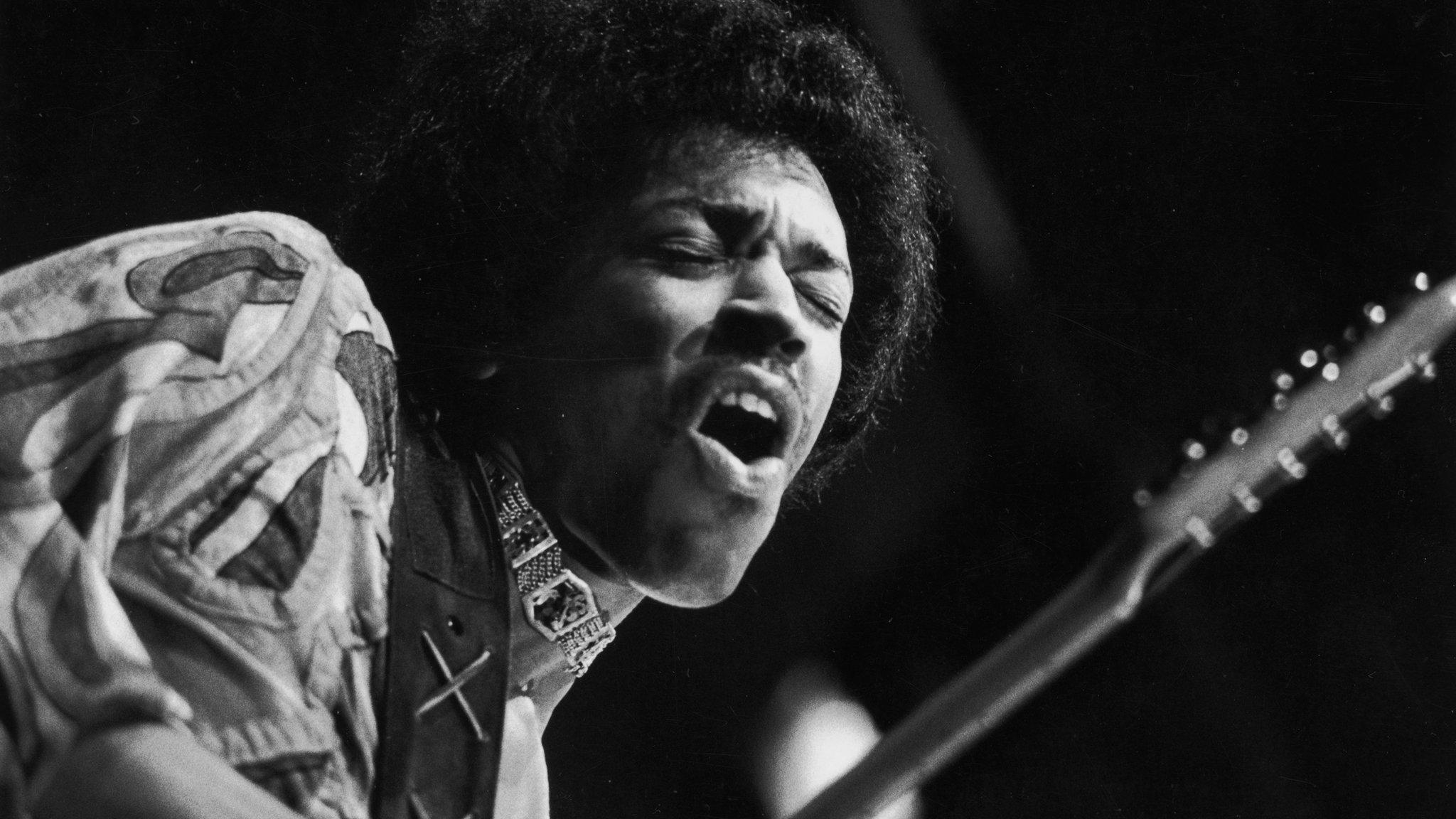
- Published3 February 2013
